Book Reviews
In each issue of The Chemist, different people review interesting books. If you are interested in reviweing a book for The Chemist, please contact us at . The following are the lastest book reviews that appeared at different issues of The Chemist:
| |
Peptide Synthesis Methods and Protocols
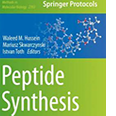 The examined publication, "Peptide Synthesis Methods and Protocols," stands out in the scientific landscape, especially for chemists and researchers in the field of peptide chemistry. It's the 2103rd installment in the esteemed "Methods in Molecular Biology" series from Springer Protocol, under Humana's publication. The book, divided into 22 sections, takes a thorough look at various aspects of peptide synthesis. It covers everything from basic tests like the .... The examined publication, "Peptide Synthesis Methods and Protocols," stands out in the scientific landscape, especially for chemists and researchers in the field of peptide chemistry. It's the 2103rd installment in the esteemed "Methods in Molecular Biology" series from Springer Protocol, under Humana's publication. The book, divided into 22 sections, takes a thorough look at various aspects of peptide synthesis. It covers everything from basic tests like the ....
|
|
|
Clinical Toxicology: Principles & Mechanisms. (2nd Edition)
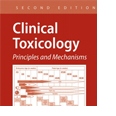 This is a superior textbook for the clinical toxicologist and for undergraduate and beginning graduate students in the clinical sciences including pharmacology and clinical chemistry/clinical toxicology. The textbook covers some of the same topics commonly covered in other toxicology texts (e.g., mechanisms, toxicokinetics, medicinal chemistry), but it stresses certain topics not commonly seen in other toxicology textbooks (e.g., adverse... This is a superior textbook for the clinical toxicologist and for undergraduate and beginning graduate students in the clinical sciences including pharmacology and clinical chemistry/clinical toxicology. The textbook covers some of the same topics commonly covered in other toxicology texts (e.g., mechanisms, toxicokinetics, medicinal chemistry), but it stresses certain topics not commonly seen in other toxicology textbooks (e.g., adverse...
|
|
|
Metal-Polymer Nanocomposites
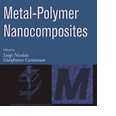 Metal-Polymer Nanocomposites contains nine chapters, each written by a different author or set of authors, most of whom are not American. Because of this authorship, the style differs with each chapter. Each chapter is a review of the technology on a specific area of nano-sized metal particles, materials containing nano-metal particles, and polymers containing nano-metallic particles and their properties.
The first chapter deals with general physical and chemical properties... Metal-Polymer Nanocomposites contains nine chapters, each written by a different author or set of authors, most of whom are not American. Because of this authorship, the style differs with each chapter. Each chapter is a review of the technology on a specific area of nano-sized metal particles, materials containing nano-metal particles, and polymers containing nano-metallic particles and their properties.
The first chapter deals with general physical and chemical properties...
|
|
|
Organic Structure Analysis (2nd Edition)
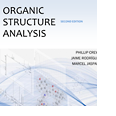 Many undergraduate chemistry programs are offering upper-level coursework in organic structure determination. This type of class is useful to upper-division students. The additional skills gained are applicable for other advanced courses, independent research projects, and future graduate studies.
The Crews text is very useful for a 400-level special topics class, particularly if the pedagogical style of the professor leans towards... Many undergraduate chemistry programs are offering upper-level coursework in organic structure determination. This type of class is useful to upper-division students. The additional skills gained are applicable for other advanced courses, independent research projects, and future graduate studies.
The Crews text is very useful for a 400-level special topics class, particularly if the pedagogical style of the professor leans towards...
|
|
|
Casarett & Doull’s Toxicology: The Basic Science of Poisons (7th Edition)
 This is an outstanding and very thorough comprehensive textbook on toxicology. It will serve equally well as a reference book or textbook for graduate students.
The 7th edition offers references from the internet as well as from traditional books and journals. It also offers expanded information from molecular biology, oncology, environmental health, risk assessment, and the myriad of new laboratory techniques ... This is an outstanding and very thorough comprehensive textbook on toxicology. It will serve equally well as a reference book or textbook for graduate students.
The 7th edition offers references from the internet as well as from traditional books and journals. It also offers expanded information from molecular biology, oncology, environmental health, risk assessment, and the myriad of new laboratory techniques ...
|
|
|
The Human Brain Book
 This is a beautifully illustrated guide to the human brain. Essentially designed as a student aid, this book has 256 pages of color 3-D illustrations and PET scans. An accompanying DVD-ROM allows the student to experience interactive exercises with brain scans and brain anatomy.
The book has a table of contents, 14 sections/chapters, a glossary, an index, and a list of acknowledgments. It lacks a bibliography of further reading. Essentially laid out as illustrations with explanatory text, this ... This is a beautifully illustrated guide to the human brain. Essentially designed as a student aid, this book has 256 pages of color 3-D illustrations and PET scans. An accompanying DVD-ROM allows the student to experience interactive exercises with brain scans and brain anatomy.
The book has a table of contents, 14 sections/chapters, a glossary, an index, and a list of acknowledgments. It lacks a bibliography of further reading. Essentially laid out as illustrations with explanatory text, this ...
|
|
|
Principles of Toxicology (2nd Edition)
 This is an excellent small/short book on toxicology. It evolved from an introductory course which the authors taught at Clemson University. It will serve nicely as a course outline or companion book/textbook for an undergraduate toxicology course.
The book has three especially useful features: 1) extensive cross listing to help the student quickly locate related subject matter, 2) an appendix with a list of selected toxicants including their structures, .... This is an excellent small/short book on toxicology. It evolved from an introductory course which the authors taught at Clemson University. It will serve nicely as a course outline or companion book/textbook for an undergraduate toxicology course.
The book has three especially useful features: 1) extensive cross listing to help the student quickly locate related subject matter, 2) an appendix with a list of selected toxicants including their structures, ....
|
|
|
Best of the Brain (1st Edition) from Scientific American
 This is a nice little neuroscience book with a futuristic twist. Fully one third of the book is directed at future uses and treatments of the brain. The book has 31 contributing authors, 270 pages, numerous figures and color pictures, a table of contents, 21 chapters divided into three sections, and an index. Each chapter has a short bibliography for further reading on the topic and a very short overview of the chapter’s author(s). One appendix includes a list of other books and... This is a nice little neuroscience book with a futuristic twist. Fully one third of the book is directed at future uses and treatments of the brain. The book has 31 contributing authors, 270 pages, numerous figures and color pictures, a table of contents, 21 chapters divided into three sections, and an index. Each chapter has a short bibliography for further reading on the topic and a very short overview of the chapter’s author(s). One appendix includes a list of other books and...
|
|
|
Molecular Diagnostics: Fundamentals, Methods, & Clinical Applications (2nd Ed.)
 This textbook is excellent for an introductory course in clinical molecular biology. The authors have presented an adequate amount of theory and practical applications to support a one semester introductory course without overwhelming a student with endless technical detail. In this fashion, they have written a book that will serve students and professors for some time to come, despite the fact that molecular biology is a continuously... This textbook is excellent for an introductory course in clinical molecular biology. The authors have presented an adequate amount of theory and practical applications to support a one semester introductory course without overwhelming a student with endless technical detail. In this fashion, they have written a book that will serve students and professors for some time to come, despite the fact that molecular biology is a continuously...
|
|
|
The Clinical Toxicology Laboratory: Contemporary Practice of Poisoning Evaluation
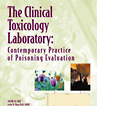 This excellent textbook is based on a clinical toxicology review course which has been offered in the past by the American Association for Clinical Chemistry (AACC) and which has been extremely well received by the participants. The text focuses on the delivery of real time answers to the clinician dealing with the poisoned patient seen in the hospital emergency room setting. The book targets chemists.... This excellent textbook is based on a clinical toxicology review course which has been offered in the past by the American Association for Clinical Chemistry (AACC) and which has been extremely well received by the participants. The text focuses on the delivery of real time answers to the clinician dealing with the poisoned patient seen in the hospital emergency room setting. The book targets chemists....
|
|
|
A Small Dose of Toxicology: The Health Effects of Common Chemicals
 This book is exactly what it purports to be, namely a small dose of toxicology. Written expressly for those individuals who have no prior scientific background, the book presents in very readable fashion basic facts about common toxic compounds and their effects on people. The book evolved out of a continuing education course which the author taught for the Department of Environmental and Occupational Health Services... This book is exactly what it purports to be, namely a small dose of toxicology. Written expressly for those individuals who have no prior scientific background, the book presents in very readable fashion basic facts about common toxic compounds and their effects on people. The book evolved out of a continuing education course which the author taught for the Department of Environmental and Occupational Health Services...
|
|
|
The Scientific American Book of the Brain (1st Ed.)
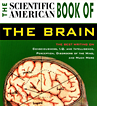 This is an intelligently written and very readable little book on the science of the brain. It serves as a wonderful introduction to neuroscience and makes an important contribution to the understanding of such topics as consciousness, I.Q., intelligence, perception, gender ideation, and neurological diseases. It will serve equally well as an introduction to a neuroscience course or a handbook for the lay person with a need to understand the... This is an intelligently written and very readable little book on the science of the brain. It serves as a wonderful introduction to neuroscience and makes an important contribution to the understanding of such topics as consciousness, I.Q., intelligence, perception, gender ideation, and neurological diseases. It will serve equally well as an introduction to a neuroscience course or a handbook for the lay person with a need to understand the...
|
|
| |
|
|
|
|
|

 The examined publication, "Peptide Synthesis Methods and Protocols," stands out in the scientific landscape, especially for chemists and researchers in the field of peptide chemistry. It's the 2103rd installment in the esteemed "Methods in Molecular Biology" series from Springer Protocol, under Humana's publication. The book, divided into 22 sections, takes a thorough look at various aspects of peptide synthesis. It covers everything from basic tests like the ....
The examined publication, "Peptide Synthesis Methods and Protocols," stands out in the scientific landscape, especially for chemists and researchers in the field of peptide chemistry. It's the 2103rd installment in the esteemed "Methods in Molecular Biology" series from Springer Protocol, under Humana's publication. The book, divided into 22 sections, takes a thorough look at various aspects of peptide synthesis. It covers everything from basic tests like the ....  This is a superior textbook for the clinical toxicologist and for undergraduate and beginning graduate students in the clinical sciences including pharmacology and clinical chemistry/clinical toxicology. The textbook covers some of the same topics commonly covered in other toxicology texts (e.g., mechanisms, toxicokinetics, medicinal chemistry), but it stresses certain topics not commonly seen in other toxicology textbooks (e.g., adverse...
This is a superior textbook for the clinical toxicologist and for undergraduate and beginning graduate students in the clinical sciences including pharmacology and clinical chemistry/clinical toxicology. The textbook covers some of the same topics commonly covered in other toxicology texts (e.g., mechanisms, toxicokinetics, medicinal chemistry), but it stresses certain topics not commonly seen in other toxicology textbooks (e.g., adverse...  Metal-Polymer Nanocomposites contains nine chapters, each written by a different author or set of authors, most of whom are not American. Because of this authorship, the style differs with each chapter. Each chapter is a review of the technology on a specific area of nano-sized metal particles, materials containing nano-metal particles, and polymers containing nano-metallic particles and their properties.
The first chapter deals with general physical and chemical properties...
Metal-Polymer Nanocomposites contains nine chapters, each written by a different author or set of authors, most of whom are not American. Because of this authorship, the style differs with each chapter. Each chapter is a review of the technology on a specific area of nano-sized metal particles, materials containing nano-metal particles, and polymers containing nano-metallic particles and their properties.
The first chapter deals with general physical and chemical properties...  Many undergraduate chemistry programs are offering upper-level coursework in organic structure determination. This type of class is useful to upper-division students. The additional skills gained are applicable for other advanced courses, independent research projects, and future graduate studies.
The Crews text is very useful for a 400-level special topics class, particularly if the pedagogical style of the professor leans towards...
Many undergraduate chemistry programs are offering upper-level coursework in organic structure determination. This type of class is useful to upper-division students. The additional skills gained are applicable for other advanced courses, independent research projects, and future graduate studies.
The Crews text is very useful for a 400-level special topics class, particularly if the pedagogical style of the professor leans towards...  This is an outstanding and very thorough comprehensive textbook on toxicology. It will serve equally well as a reference book or textbook for graduate students.
The 7th edition offers references from the internet as well as from traditional books and journals. It also offers expanded information from molecular biology, oncology, environmental health, risk assessment, and the myriad of new laboratory techniques ...
This is an outstanding and very thorough comprehensive textbook on toxicology. It will serve equally well as a reference book or textbook for graduate students.
The 7th edition offers references from the internet as well as from traditional books and journals. It also offers expanded information from molecular biology, oncology, environmental health, risk assessment, and the myriad of new laboratory techniques ...  This is a beautifully illustrated guide to the human brain. Essentially designed as a student aid, this book has 256 pages of color 3-D illustrations and PET scans. An accompanying DVD-ROM allows the student to experience interactive exercises with brain scans and brain anatomy.
The book has a table of contents, 14 sections/chapters, a glossary, an index, and a list of acknowledgments. It lacks a bibliography of further reading. Essentially laid out as illustrations with explanatory text, this ...
This is a beautifully illustrated guide to the human brain. Essentially designed as a student aid, this book has 256 pages of color 3-D illustrations and PET scans. An accompanying DVD-ROM allows the student to experience interactive exercises with brain scans and brain anatomy.
The book has a table of contents, 14 sections/chapters, a glossary, an index, and a list of acknowledgments. It lacks a bibliography of further reading. Essentially laid out as illustrations with explanatory text, this ...  This is an excellent small/short book on toxicology. It evolved from an introductory course which the authors taught at Clemson University. It will serve nicely as a course outline or companion book/textbook for an undergraduate toxicology course.
The book has three especially useful features: 1) extensive cross listing to help the student quickly locate related subject matter, 2) an appendix with a list of selected toxicants including their structures, ....
This is an excellent small/short book on toxicology. It evolved from an introductory course which the authors taught at Clemson University. It will serve nicely as a course outline or companion book/textbook for an undergraduate toxicology course.
The book has three especially useful features: 1) extensive cross listing to help the student quickly locate related subject matter, 2) an appendix with a list of selected toxicants including their structures, ....  This is a nice little neuroscience book with a futuristic twist. Fully one third of the book is directed at future uses and treatments of the brain. The book has 31 contributing authors, 270 pages, numerous figures and color pictures, a table of contents, 21 chapters divided into three sections, and an index. Each chapter has a short bibliography for further reading on the topic and a very short overview of the chapter’s author(s). One appendix includes a list of other books and...
This is a nice little neuroscience book with a futuristic twist. Fully one third of the book is directed at future uses and treatments of the brain. The book has 31 contributing authors, 270 pages, numerous figures and color pictures, a table of contents, 21 chapters divided into three sections, and an index. Each chapter has a short bibliography for further reading on the topic and a very short overview of the chapter’s author(s). One appendix includes a list of other books and...  This textbook is excellent for an introductory course in clinical molecular biology. The authors have presented an adequate amount of theory and practical applications to support a one semester introductory course without overwhelming a student with endless technical detail. In this fashion, they have written a book that will serve students and professors for some time to come, despite the fact that molecular biology is a continuously...
This textbook is excellent for an introductory course in clinical molecular biology. The authors have presented an adequate amount of theory and practical applications to support a one semester introductory course without overwhelming a student with endless technical detail. In this fashion, they have written a book that will serve students and professors for some time to come, despite the fact that molecular biology is a continuously...  This excellent textbook is based on a clinical toxicology review course which has been offered in the past by the American Association for Clinical Chemistry (AACC) and which has been extremely well received by the participants. The text focuses on the delivery of real time answers to the clinician dealing with the poisoned patient seen in the hospital emergency room setting. The book targets chemists....
This excellent textbook is based on a clinical toxicology review course which has been offered in the past by the American Association for Clinical Chemistry (AACC) and which has been extremely well received by the participants. The text focuses on the delivery of real time answers to the clinician dealing with the poisoned patient seen in the hospital emergency room setting. The book targets chemists....  This book is exactly what it purports to be, namely a small dose of toxicology. Written expressly for those individuals who have no prior scientific background, the book presents in very readable fashion basic facts about common toxic compounds and their effects on people. The book evolved out of a continuing education course which the author taught for the Department of Environmental and Occupational Health Services...
This book is exactly what it purports to be, namely a small dose of toxicology. Written expressly for those individuals who have no prior scientific background, the book presents in very readable fashion basic facts about common toxic compounds and their effects on people. The book evolved out of a continuing education course which the author taught for the Department of Environmental and Occupational Health Services...  This is an intelligently written and very readable little book on the science of the brain. It serves as a wonderful introduction to neuroscience and makes an important contribution to the understanding of such topics as consciousness, I.Q., intelligence, perception, gender ideation, and neurological diseases. It will serve equally well as an introduction to a neuroscience course or a handbook for the lay person with a need to understand the...
This is an intelligently written and very readable little book on the science of the brain. It serves as a wonderful introduction to neuroscience and makes an important contribution to the understanding of such topics as consciousness, I.Q., intelligence, perception, gender ideation, and neurological diseases. It will serve equally well as an introduction to a neuroscience course or a handbook for the lay person with a need to understand the...